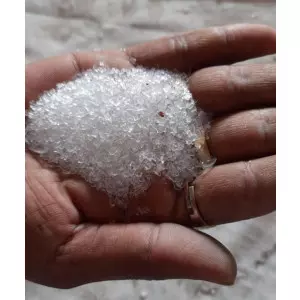- Home
- About Us
- Products
- RUHANI INDUSTRIES PRODUCT LIST
- Automotive Lubricating Oil
- Automotive Grease
- Automotive Coolant
- Industrial Oils & Greases
- Industrial Aromatic Solvents
- Base Oil (Recycled)
- Paraffin Oil
- Glycols
- Industrial Fuel Oil
- Bitumen
- Industrial Wax
- Petroleum Jelly
- Paraffin Wax
- Lubricant Oil Cutting Oil And Coolant Additives
- Diesel Engine Oil Additive Package -CH4/CF4/CI4
- Gasoline Engine Oil Additive Package – SF/SL/SM/SN
- Anti-Wear Hydraulic Oil Additive Package
- Automatic Transmission Oil Additive Package
- Industrial Gear Oil Additive Package
- Tractor Transmission Package
- TBN 400 Synthetic Calcium Suplhoate
- ZDDP Zinc DiAlkyl Dithio Phosphate
- Pour Point Depressant PPD
- Anti Foam - Foam Inhibitor
- Cutting Fluid Additive
- Coolant Additives
- Lube Oil Viscosity Index Improver Polymer
- Organic Waste And Waste Feeds
- Rubber Process Oil
- Carbon Black Powder
- Machine Cutting Oil
- Other Lubricants
- Imported Engine Oil
- Diesel Exhaust Fluid (DEF)
- Industrial Coal
- Base Oil Group 2
- Base Oil Group 1
- Base Oil Group 3
- RUHANI INDUSTRIES PRODUCT LIST
- Updates
- Gallery
- Contact Us
Silica Gel
Silica Gel Details
Silica gel is a type of desiccant, which is a substance that is used to absorb and remove moisture from the surrounding environment. It is commonly encountered in small, transparent packets that are often found in packaging of various products, such as electronics, leather goods, and medications, to prevent moisture damage.
Here are some key points about silica gel:
Composition: Silica gel is made from silicon dioxide, which is a naturally occurring compound found in various forms in nature, including quartz.
Adsorption: Silica gel works by adsorbing (not absorbing) water molecules onto its surface. This helps to lower the humidity level in the enclosed space, thereby preventing the growth of mold, mildew, and other forms of moisture-related damage.
Indicator Types: Some silica gel packets include color-changing indicators. These indicators change color as the silica gel becomes saturated with moisture. For instance, the gel may start off blue or orange and turn pink when it's no longer effective.
Reactivation: Silica gel can be reactivated for reuse. This is typically done by placing the saturated gel in an oven at a low temperature for a certain period, which drives off the adsorbed moisture. The reactivated gel can then be used again.
Non-Toxic: Silica gel is considered non-toxic and non-hazardous. However, it's not meant to be ingested, and the small packets often come with warnings to keep them away from children and pets.
Multiple Uses: Besides packaging, silica gel has various other uses. It can be used to protect documents, prevent tarnish on silverware, dry flowers, and even help rescue wet electronics if acted upon quickly.
Remember, while silica gel is generally safe, it's not meant for consumption. If ingested, it could potentially cause discomfort, so it's important to keep it away from areas where it might be mistaken for food or treats.
Related Products
Ethylene Propylene Copolymer
Ethylene Propylene Copolymer (EPM/EP) and Ethylene Propylene Diene Monomer (EPDM) are types of synthetic rubbers that ar... Continue
Deepam Oil
"Deepam Oil" could refer to different things depending on the context. Here are a few possibilities:Deepam Oil Lamp: I... Continue
Empty Lubricant Oil Bottles
It seems like you're asking about empty lubricant oil bottles. Empty lubricant oil bottles are containers that previousl... Continue
Dioctyl Phthalate (DOP)
Dioctyl Phthalate (DOP), also known as diethylhexyl phthalate (DEHP), is a common type of phthalate ester compound. Phth... Continue
Liquid Glycerine
Liquid glycerine, also known as glycerol or glycerin, is a colorless, odorless, and syrupy liquid. It is a natural compo... Continue
Crude Glycerine Oil
Crude glycerine oil, also known as crude glycerol or glycerol residue, is a byproduct of biodiesel production. It is der... Continue
Technical Grade Urea
Technical grade urea refers to urea that is produced and marketed for non-fertilizer industrial applications. Urea is a ... Continue
Agarbatti White Oil
Agarbatti (also known as incense sticks) are commonly used in various cultures and religious practices for their aromati... Continue
Diethyl Phthalate (DEP)
Diethyl Phthalate (DEP) is a chemical compound that belongs to a class of chemicals known as phthalates. Phthalates are ... Continue











